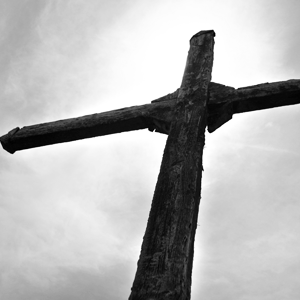
John Stott’s The Cross of Christ is one of those books every Christian should read. While there are parts I don’t agree with (for example, Stott’s treatment of impassibility), the book as a whole is a masterful treatise on the glories of the cross.
In chapter 7, Stott looks at the four principal New Testament images of salvation.
- The shrine (propitiation)
- The market (redemption)
- The court of law (justification)
- The home (reconciliation)
This beautiful chapter on “The Salvation of Sinners” ends with a masterful summary of the four images (198-99):
First, each highlights a different aspect of our human need. Propitiation underscores the wrath of God upon us, redemption our captivity to sin, justification our guilt, and reconciliation our enmity against God and alienation from him. These metaphors do not flatter us. They expose the magnitude of our need.
Second, all four images emphasize that the saving initiative was taken by God in his love. It is he who has propitiated his own wrath, redeemed us from our miserable bondage, declared us righteous in his sight and reconciled us to himself.
Stott shows that texts like 1 John 4:10; Luke 1:68; Rom. 8:33; and 2 Cor. 5:18 teach this precious truth.
Third, all four images plainly teach that God’s saving work was achieved through the bloodshedding, that is, the substitutionary sacrifice of Christ.
Again, Stott reminds us of the most important texts that make this point: Rom. 3:25; Eph. 1:7; Rom. 5:9; Eph. 2:13; Col. 1:20.
The chapter concludes with a much needed word for our day. Everyone who marginalizes penal substitution by calling it a “theory,” everyone who minimizes this doctrine by making it just one aspect of the atonement, everyone who shies away from this teaching in a misguided effort to rescue the love of God, everyone who undermines this essential truth by refusing to declare it confidently in plain, unambiguous terms, should pay careful attention to this concluding paragraph:
So substitution is not a “theory of the atonement.” Nor is it even an additional image to take its place as an option alongside the others. It is rather the essence of each image and the heart of the atonement itself. None of the four images could stand without it. I am not of course saying that it is necessary to understand, let alone articulate, a substitutionary atonement before one can be saved. Yet the responsibility of Christian teachers, preachers and other witnesses is to seek grace to expound it with clarity and conviction. For the better people understand the glory of the divine substitution, the easier it will be for them to trust in the Substitute.
Is there more than one thing to say about the atonement? Absolutely. Are there a variety of implications and applications that can be drawn from the cross of Christ? Of course. But none of them make sense if Christ did not die in our place to assuage the wrath of God. Penal substitition is not a theory–one suggested idea that may or may not be true. Penal substitutionary atonement is the hope of sinners, the heart of the gospel, and the good news without which all other news regarding the cross is null and void.



